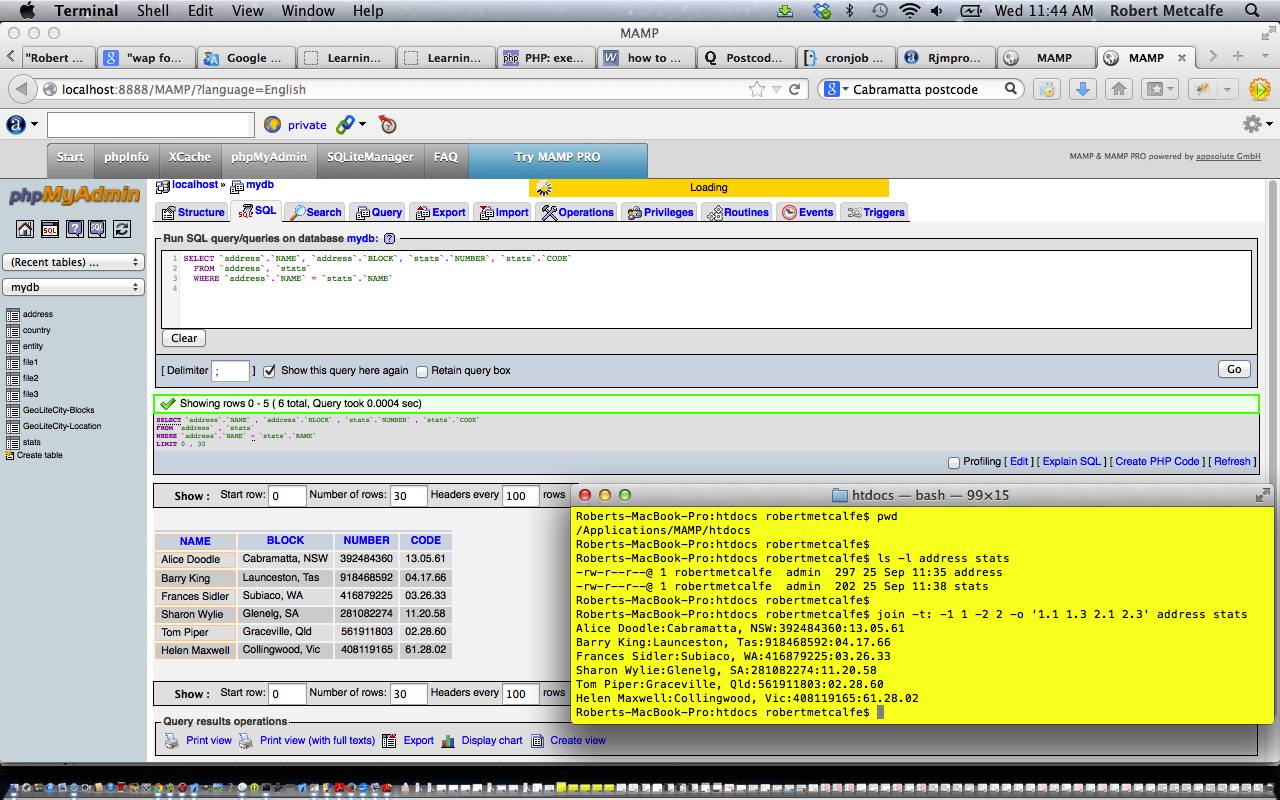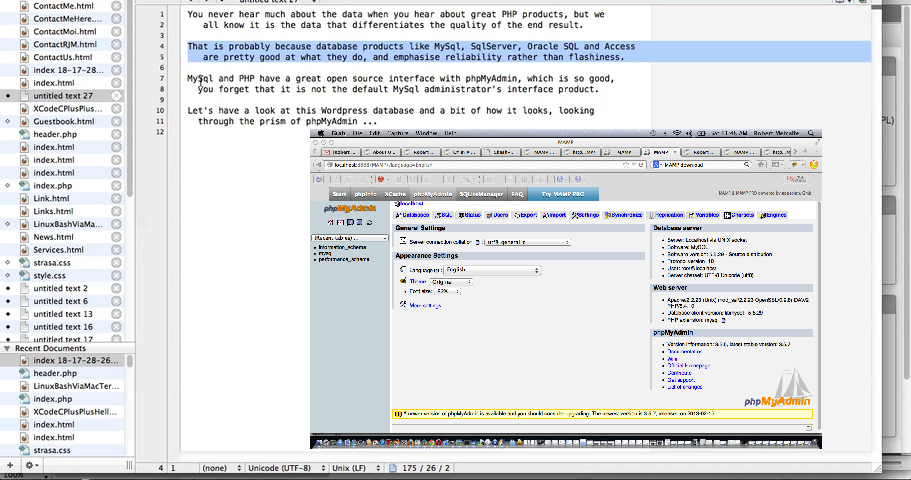Today’s tutorial follows up on phpMyAdmin interface to MySql and PHP Primer Tutorial in that we again use the brilliant phpMyAdmin to use MySql calls to create several tables and show that you can build a Linux or Unix based file system method of using some RDBMS techniques to do with joining tables on a Linux command line to give a similar result to using MySql RDBMS on a database. Why should that be interesting? Well, to my mind, you don’t need to have a database, necessarily, for every data-based job you do, because, let’s face it, as good as the databases of today are, they use quite a bit of memory. This is just some food for thought … am thinking ???. Some cases in point at this domain here at www.rjmprogramming.com.au are:
So, for today’s tutorial we make use of the Linux (or Unix) command join. Integration of such ideas into PHP would get you into the world of fopen and fread and fwrite and fclose and exec and system and more.
Here is some downloadable Linux (Mac Terminal) shell programming source code LinuxJoin_MySql_Primer as required.
Here is some downloadable input SQL used to create and populate the MySql tables file1_file2_file3.sql, address_stats.sql as required.
Here are some downloadable input data files used at Linux file1,file2, file3, address, stats as required.
Previous phpMyAdmin interface to MySql and PHP Primer Tutorial is relevant and shown below.
Transcript:
You never hear much about the data when you hear about great PHP products, but we
all know it is the data that differentiates the quality of the end result.
That is probably because database products like MySql, SqlServer, Oracle SQL, Advantage and Access
are pretty good at what they do, and emphasise reliability rather than flashiness.
MySql and PHP have a great open source interface with phpMyAdmin, which is so good,
you forget that it is not the default MySql administrator’s interface product.
Let’s have a look at this WordPress database and a bit of how it looks, looking
through the prism of phpMyAdmin …
If this was interesting you may be interested in this too.
If this was interesting you may be interested in this too.




